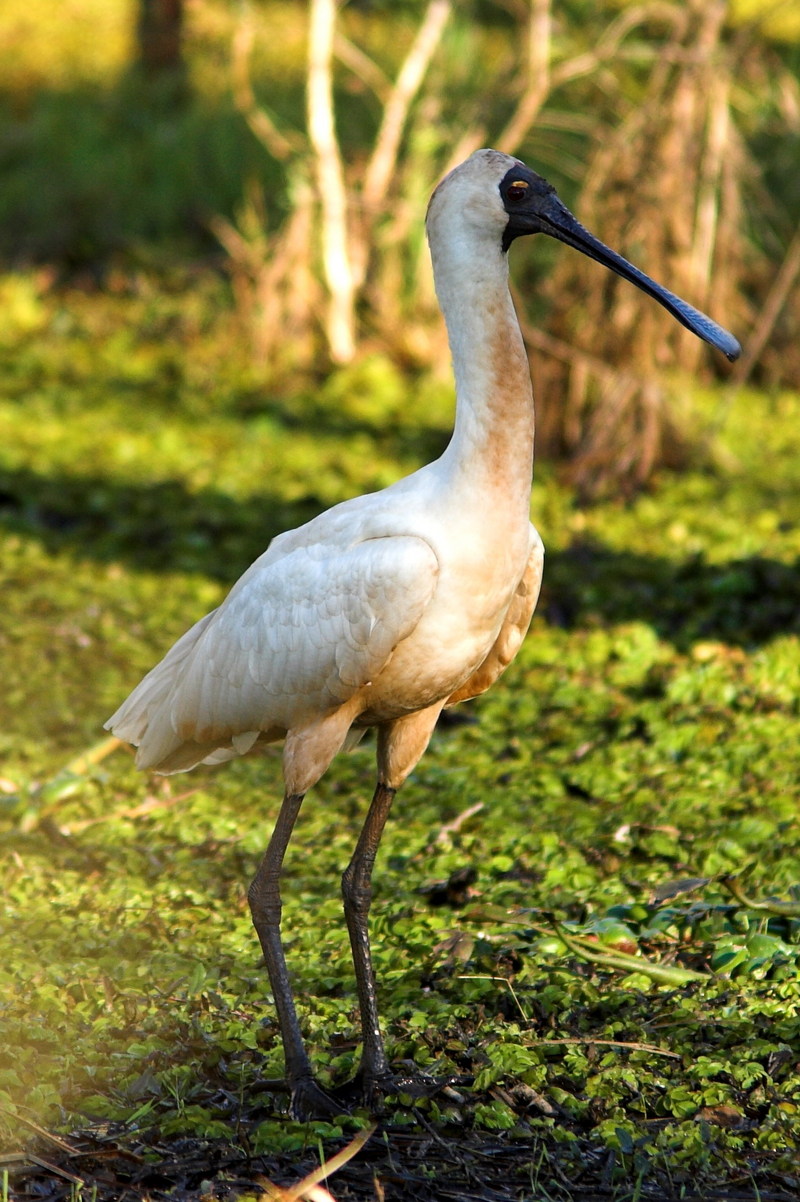Royal Spoonbill
From Wikipedia, the free encyclopedia
[Photo] Royal Spoonbill, Platalea regia. Brisbane, Australia. Date July 2006. Photo by Glen Fergus http://commons.wikimedia.org/wiki/User:Glen_Fergus
The Royal Spoonbill, Platalea regia occurs in intertidal flats and shallows of fresh and saltwater wetlands in Australia, New Zealand, Indonesia, Papua New Guinea, and the Solomon Islands. It has also been recorded as a vagrant in New Caledonia. The Royal Spoonbill feeds by sweeping its bill from side to side. It always flies with their head extended. Widespread throughout its large range, the Royal Spoonbill is evaluated as Least Concern on the IUCN Red List of Threatened Species.
Description
The Royal Spoonbill is a large white bird with a black, spoon-shaped bill. It is a wading bird and has long legs for walking through water. It eats fish and other water animals, such as shellfish, crabs and frogs. It catches them by making a side-to-side movement with its bill.
Breeding
When they are breeding, long white plumes grow from the back of their heads and coloured patches appear on the face. The nest is an open platform of sticks in a tree in which the female lays two or three eggs. The chicks hatch after 21 days. The birds are highly sensitive to disturbance in the breeding season. In Australia, whole colonies have been known to desert their eggs after a minor upset.
http://en.wikipedia.org/wiki/Royal_Spoonbill
| The text in this page is based on the copyrighted Wikipedia article shown in above URL. It is used under the GNU Free Documentation License. You may redistribute it, verbatim or modified, providing that you comply with the terms of the GFDL. |
|

